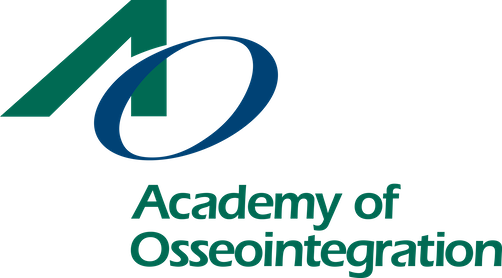-
 Derrick Pylant, DDS In this presentation we will discuss the indications for alveolar ridge preservation and immediate implant placement. Bio-material selection, surgical technique, and timing of implant placement will be highlighted with a clinical emphasis on practical and predictable techniques. Recorded - August 14, 2021
Derrick Pylant, DDS In this presentation we will discuss the indications for alveolar ridge preservation and immediate implant placement. Bio-material selection, surgical technique, and timing of implant placement will be highlighted with a clinical emphasis on practical and predictable techniques. Recorded - August 14, 2021 -
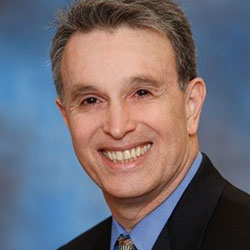 Robert Lemke, DDS, MD This is an update after one-year of being in the trenches of COVID-19. What do we know now. Why we will need masks for another year and which ones to avoid. I will review immunology as it applies to COVID-19. Vaccines from history, phase studies, mechanisms, herd protection and mutations will all be reviewed. Finally an intro to being a vaccine injection center will be introduced. Recorded - March 4, 2021
Robert Lemke, DDS, MD This is an update after one-year of being in the trenches of COVID-19. What do we know now. Why we will need masks for another year and which ones to avoid. I will review immunology as it applies to COVID-19. Vaccines from history, phase studies, mechanisms, herd protection and mutations will all be reviewed. Finally an intro to being a vaccine injection center will be introduced. Recorded - March 4, 2021 -
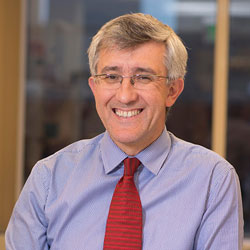 Alpdogan Kantarci, DDS, MS, PhD Peri-implant diseases present a major challenge in dental practice. Treatment options for advanced diseases around dental implants are limited. While there are several similarities between periodontal and peri-implant diseases in their pathogenesis and microbial etiologies, periodontal treatment strategies are not readily applicable to the treatment of peri-implant mucositis and peri-implantitis. One of the key differences is the characteristics of the implant surfaces. In this presentation, emerging preventive and therapeutic approaches will be discussed with an emphasis on geriatric patient population. Recorded - April 21, 2021
Alpdogan Kantarci, DDS, MS, PhD Peri-implant diseases present a major challenge in dental practice. Treatment options for advanced diseases around dental implants are limited. While there are several similarities between periodontal and peri-implant diseases in their pathogenesis and microbial etiologies, periodontal treatment strategies are not readily applicable to the treatment of peri-implant mucositis and peri-implantitis. One of the key differences is the characteristics of the implant surfaces. In this presentation, emerging preventive and therapeutic approaches will be discussed with an emphasis on geriatric patient population. Recorded - April 21, 2021 -
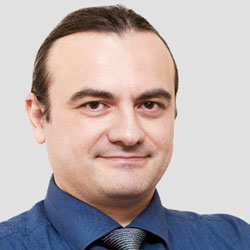 Kaan Orhan, DDS, MSc, MHM, PhD Dental implants have become part of routine treatment plans in many dental offices because of their popularity and acceptance by patients. Appropriate pre-placement planning, in which imaging plays a pivotal role, helps to ensure a satisfactory outcome. The development of precise pre-surgical imaging techniques and surgical templates allows the dentist to place these implants with relative ease and predictability. This presentation gives an overview of current practices in implant imaging for the practicing, with emphasis on selection criteria for imaging. Contemporary imaging techniques such as USG, MRI for dental implant planning, surgical phase, and also follow-up treatment will be discussed. Recorded - June 1, 2021
Kaan Orhan, DDS, MSc, MHM, PhD Dental implants have become part of routine treatment plans in many dental offices because of their popularity and acceptance by patients. Appropriate pre-placement planning, in which imaging plays a pivotal role, helps to ensure a satisfactory outcome. The development of precise pre-surgical imaging techniques and surgical templates allows the dentist to place these implants with relative ease and predictability. This presentation gives an overview of current practices in implant imaging for the practicing, with emphasis on selection criteria for imaging. Contemporary imaging techniques such as USG, MRI for dental implant planning, surgical phase, and also follow-up treatment will be discussed. Recorded - June 1, 2021 -
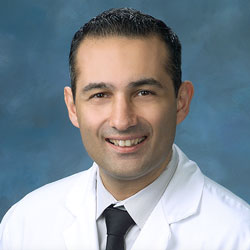 T. Cem Sayin, DDS, PhD Clinicians are confronted with difficult decisions regarding whether a tooth with pulpal and/or periapical disease should be saved through endodontic treatment or be extracted and replaced with an implant. This lecture will review the endodontic and implant literature as well as the related factors that need to be considered by the clinician affecting decision making for their patients. Recorded - February 03, 2021
T. Cem Sayin, DDS, PhD Clinicians are confronted with difficult decisions regarding whether a tooth with pulpal and/or periapical disease should be saved through endodontic treatment or be extracted and replaced with an implant. This lecture will review the endodontic and implant literature as well as the related factors that need to be considered by the clinician affecting decision making for their patients. Recorded - February 03, 2021 -
 Preetinder Singh, DDS, MS Bone regeneration is often needed prior to dental implant treatment due to the lack of adequate quantity and quality after infectious diseases. The greatest regenerative power can be obtained with autologous tissue, primarily the bone alive, taken from the same site or adjacent sites, up to the use centrifugation of blood with the selection of the parts with the greatest potential regenerative. In fact, various techniques and technologies were chronologically successive to cope with an ever better preparation of these concentrates of blood. Our aim is to know these advances and discuss the ways in which platelet concentrates may provide such unexpected beneficial therapeutic effects. Most of the growth factors derived from autologous blood is released upon platelet activation, and their clinical use has been popularized with Platelet-rich plasma (PRP), Platelet rich fibrin (PRF) & its advancements namely A-PRF & i-PRF, Concentrated Growth Factors (CGF), Sticky Bone Concept etc. It is time to use this ‘blood’ in different ways to achieve regenerative potentials in the field of implant dentistry. Recorded - January 20, 2021
Preetinder Singh, DDS, MS Bone regeneration is often needed prior to dental implant treatment due to the lack of adequate quantity and quality after infectious diseases. The greatest regenerative power can be obtained with autologous tissue, primarily the bone alive, taken from the same site or adjacent sites, up to the use centrifugation of blood with the selection of the parts with the greatest potential regenerative. In fact, various techniques and technologies were chronologically successive to cope with an ever better preparation of these concentrates of blood. Our aim is to know these advances and discuss the ways in which platelet concentrates may provide such unexpected beneficial therapeutic effects. Most of the growth factors derived from autologous blood is released upon platelet activation, and their clinical use has been popularized with Platelet-rich plasma (PRP), Platelet rich fibrin (PRF) & its advancements namely A-PRF & i-PRF, Concentrated Growth Factors (CGF), Sticky Bone Concept etc. It is time to use this ‘blood’ in different ways to achieve regenerative potentials in the field of implant dentistry. Recorded - January 20, 2021 -
 Martina Stefanini, DDS, PhD The recession of the buccal soft tissue margin is a frequent complication of well integrated dental implants. The appearance of metallic structure or even their transparency through the thin buccal soft tissues are common reasons for patient aesthetic complains. Moreover, bad implant installation frequently results in excessive apical dislocation of the buccal soft tissue margin of the implant supported crown. Soft tissue plastic surgical procedures and bilaminar techniques in particular, can be successfully used in combination with a pre and postsurgical prostethic approaches to increase the volume of the interdental soft tissue, to treat buccal gingival recessions and soft tissue dehiscence around dental implants and to provide the new implant supported crown with an esthetic transmucosal emergency profile. Recorded - May 4, 2021
Martina Stefanini, DDS, PhD The recession of the buccal soft tissue margin is a frequent complication of well integrated dental implants. The appearance of metallic structure or even their transparency through the thin buccal soft tissues are common reasons for patient aesthetic complains. Moreover, bad implant installation frequently results in excessive apical dislocation of the buccal soft tissue margin of the implant supported crown. Soft tissue plastic surgical procedures and bilaminar techniques in particular, can be successfully used in combination with a pre and postsurgical prostethic approaches to increase the volume of the interdental soft tissue, to treat buccal gingival recessions and soft tissue dehiscence around dental implants and to provide the new implant supported crown with an esthetic transmucosal emergency profile. Recorded - May 4, 2021 -
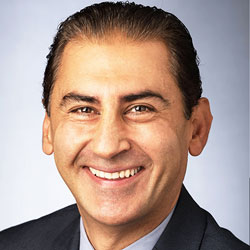 Ilser Turkyilmaz, DDS, PhD Implant-supported fixed dental prostheses improve the quality of life of edentulous patients experiencing functional and esthetic problems associated with complete dentures. CAD/CAM technology has recently revolutionized the field of implant dentistry. CAD/CAM surgical guides have greatly improved the predictability of implant surgery and the CAD/CAM fabrication of frameworks has resulted in elimination of distortion, better fit, fewer fabrication steps, and faster turn-around. All of these advancements offer improved experience for the patient, decreased treatment time, and greater accessibility. Basic clinical and laboratory procedures for restoring edentulous arches with CAD/CAM surgical guides and implant-supported fixed prostheses will be discussed. Recorded - January 11, 2021
Ilser Turkyilmaz, DDS, PhD Implant-supported fixed dental prostheses improve the quality of life of edentulous patients experiencing functional and esthetic problems associated with complete dentures. CAD/CAM technology has recently revolutionized the field of implant dentistry. CAD/CAM surgical guides have greatly improved the predictability of implant surgery and the CAD/CAM fabrication of frameworks has resulted in elimination of distortion, better fit, fewer fabrication steps, and faster turn-around. All of these advancements offer improved experience for the patient, decreased treatment time, and greater accessibility. Basic clinical and laboratory procedures for restoring edentulous arches with CAD/CAM surgical guides and implant-supported fixed prostheses will be discussed. Recorded - January 11, 2021 -
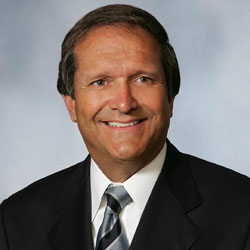 Roger Wise, DDS, MS The orthodontic profession has only recently focused its attention towards patient driven diagnosis and treatment planning. It is difficult to imagine practicing dentistry today without the utilization of dental implants. Smile esthetics can be very challenging or even compromised when implants are involved. In problem-oriented implant treatment planning the orthodontist may help establish a diagnosis that identifies possible improvement or even correction of hard and soft tissue. This lecture will also demonstrate how to establish occlusal and/or spacial relationships prior to implant placement. Recorded - March 31, 2021
Roger Wise, DDS, MS The orthodontic profession has only recently focused its attention towards patient driven diagnosis and treatment planning. It is difficult to imagine practicing dentistry today without the utilization of dental implants. Smile esthetics can be very challenging or even compromised when implants are involved. In problem-oriented implant treatment planning the orthodontist may help establish a diagnosis that identifies possible improvement or even correction of hard and soft tissue. This lecture will also demonstrate how to establish occlusal and/or spacial relationships prior to implant placement. Recorded - March 31, 2021 -
 Roya Zandparsa, DDS, MSc, DMD AI technology has been used in many aspects of human society, including medicine, and it is also being used more and more widely in dentistry. The applications extend from the research and development of new dental materials to diagnostic tools(e.g., to detect caries, periapical lesions, and periodontal disease), to treatment planning and oral health care delivery, to the post-treatment monitoring and follow-ups. In this presentation the basic concepts and principles of AI, the new advancements, new approaches, and applications of AI along with other digital technologies in dentistry will be discussed. Recorded March 15, 2022
Roya Zandparsa, DDS, MSc, DMD AI technology has been used in many aspects of human society, including medicine, and it is also being used more and more widely in dentistry. The applications extend from the research and development of new dental materials to diagnostic tools(e.g., to detect caries, periapical lesions, and periodontal disease), to treatment planning and oral health care delivery, to the post-treatment monitoring and follow-ups. In this presentation the basic concepts and principles of AI, the new advancements, new approaches, and applications of AI along with other digital technologies in dentistry will be discussed. Recorded March 15, 2022 -
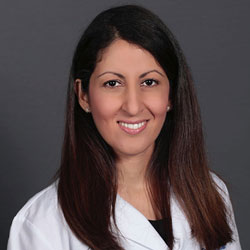 Ghadeer Thalji, DDS, PhD Success of dental implants requires the clinicians to understand the many factors that must come together to achieve long term outcomes. The lecture will explore the current scientific evidence on decisions related to the number of dental implants in various clinical scenarios of the partially and fully edentulous patients. Recorded - September 21, 2021
Ghadeer Thalji, DDS, PhD Success of dental implants requires the clinicians to understand the many factors that must come together to achieve long term outcomes. The lecture will explore the current scientific evidence on decisions related to the number of dental implants in various clinical scenarios of the partially and fully edentulous patients. Recorded - September 21, 2021 -
 Andrea Ravidà, DDS During the last decade, short implants (≤6mm) have been shown to be a reliable and effective solution for patients with posterior bone atrophy. This presentation will explore in detail the scientific literature on short implants, providing evidence-based guidelines for clinicians concerning their use. Furthermore, the benefits and disadvantages of short implants in comparison to bone regenerative therapies in conjunction with standard length implant placement will be discussed. Recorded - October 20, 2021
Andrea Ravidà, DDS During the last decade, short implants (≤6mm) have been shown to be a reliable and effective solution for patients with posterior bone atrophy. This presentation will explore in detail the scientific literature on short implants, providing evidence-based guidelines for clinicians concerning their use. Furthermore, the benefits and disadvantages of short implants in comparison to bone regenerative therapies in conjunction with standard length implant placement will be discussed. Recorded - October 20, 2021 -
 Robert Lemke, DDS, MD In implant dentistry, details count…they can add up to success, or to failure. Experienced surgeons rely on a system to ensure that all details are addressed in a methodical manner, so that none are overlooked. This course will help you to create a system that includes site analysis, preoperative medications, nuances in surgical procedures, and more for predictable success in implant surgery. Recorded - December 11, 2021
Robert Lemke, DDS, MD In implant dentistry, details count…they can add up to success, or to failure. Experienced surgeons rely on a system to ensure that all details are addressed in a methodical manner, so that none are overlooked. This course will help you to create a system that includes site analysis, preoperative medications, nuances in surgical procedures, and more for predictable success in implant surgery. Recorded - December 11, 2021 -
 Dan Holtzclaw, DDS, MS Although they have been in use for over 50 years, pterygoid dental implants are one of the least understood styles of dental implant treatment. This may be due to the fact that pterygoid implants are widely considered to be one of the most difficult fixtures to place in all of implant dentistry. In this webinar, Dr. Dan Holtzclaw details his experience utilizing pterygoid implant in hundreds of full arch immediate load cases. Recorded - September 1, 2021
Dan Holtzclaw, DDS, MS Although they have been in use for over 50 years, pterygoid dental implants are one of the least understood styles of dental implant treatment. This may be due to the fact that pterygoid implants are widely considered to be one of the most difficult fixtures to place in all of implant dentistry. In this webinar, Dr. Dan Holtzclaw details his experience utilizing pterygoid implant in hundreds of full arch immediate load cases. Recorded - September 1, 2021 -
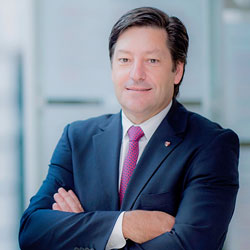 German Gallucci, DMD, PhD During this lecture, clinical considerations and indications for dental implants will be analyzed in the context of their direct application to esthetic implant-prosthetic rehabilitations. Risk assessment, treatment planning, surgical protocols and esthetic/prosthodontic rehabilitations will be discussed in detail according to different clinical situations. Recommended planning steps and treatment procedures will be presented through scientific evidence. Modern Implant-prosthetic restorations using different implant designs and digital technology call for a harmonious esthetic integration with the pre-existing environment. A scalloped gingival line with distinct papillae and free of any abrupt vertical differences in clinical crown length between anterior implants, is paramount. In this context, biologic considerations affecting normal peri-implant soft tissue integration will be discussed as a major esthetic parameter. Recorded - July 17, 2021
German Gallucci, DMD, PhD During this lecture, clinical considerations and indications for dental implants will be analyzed in the context of their direct application to esthetic implant-prosthetic rehabilitations. Risk assessment, treatment planning, surgical protocols and esthetic/prosthodontic rehabilitations will be discussed in detail according to different clinical situations. Recommended planning steps and treatment procedures will be presented through scientific evidence. Modern Implant-prosthetic restorations using different implant designs and digital technology call for a harmonious esthetic integration with the pre-existing environment. A scalloped gingival line with distinct papillae and free of any abrupt vertical differences in clinical crown length between anterior implants, is paramount. In this context, biologic considerations affecting normal peri-implant soft tissue integration will be discussed as a major esthetic parameter. Recorded - July 17, 2021 -
 Despoina Bompolaki, DDS, MS Dental implants have become a widely accepted, sought-after treatment option for replacing missing teeth. Favorable treatment outcomes depend on proper planning and execution, from both a restorative and a surgical perspective. This lecture will go well beyond the basics of restoring dental implants: achieving predictable esthetic outcomes when restoring anterior implants; capturing accurate impressions in multiple implant cases; identifying proper componentry for existing implants; recognizing and addressing common prosthetic complications; and most of all, supporting clinical decisions with scientific evidence. Recorded - November 20, 2021
Despoina Bompolaki, DDS, MS Dental implants have become a widely accepted, sought-after treatment option for replacing missing teeth. Favorable treatment outcomes depend on proper planning and execution, from both a restorative and a surgical perspective. This lecture will go well beyond the basics of restoring dental implants: achieving predictable esthetic outcomes when restoring anterior implants; capturing accurate impressions in multiple implant cases; identifying proper componentry for existing implants; recognizing and addressing common prosthetic complications; and most of all, supporting clinical decisions with scientific evidence. Recorded - November 20, 2021 -
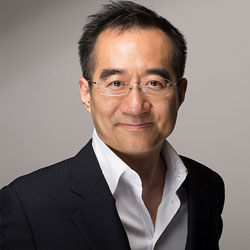 Joseph Kan, DDS, MS Esthetics immediate tooth replacement, a controversial, yet intriguing treatment concept conceived more than 25 ago. While the concept has evolved over time, numerous debates had been dedicated to its validity. Now, 25 years later, questions remain: Does it maintain gingival esthetics? Does it work as well as implant in healed sites? Is it a viable option after all ? This presentation will focus on pros and cons of esthetics immediate tooth replacement. More importantly, did we validate this procedure from lessons learned by mistakes made over the past 25 years. Recorded - November 12, 2022
Joseph Kan, DDS, MS Esthetics immediate tooth replacement, a controversial, yet intriguing treatment concept conceived more than 25 ago. While the concept has evolved over time, numerous debates had been dedicated to its validity. Now, 25 years later, questions remain: Does it maintain gingival esthetics? Does it work as well as implant in healed sites? Is it a viable option after all ? This presentation will focus on pros and cons of esthetics immediate tooth replacement. More importantly, did we validate this procedure from lessons learned by mistakes made over the past 25 years. Recorded - November 12, 2022 -
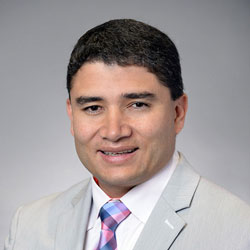 Emilio Arguello, DDS, MS This lecture will focus on the different models for successful management and integration of work-flows between a private practice versus a multi practice models. As well as the understanding of the common goals to maximize earning potential that can be achieved in both models from the practitioner’s point of view. Recorded - November 3, 2021
Emilio Arguello, DDS, MS This lecture will focus on the different models for successful management and integration of work-flows between a private practice versus a multi practice models. As well as the understanding of the common goals to maximize earning potential that can be achieved in both models from the practitioner’s point of view. Recorded - November 3, 2021 -
 Hsun-Liang Chan, DDS, MS Using the surgical microscope as a routine in the clinic for performing periodontal and implant procedures is beneficial! Increased magnification (10 to 25x) and confocal illumination make possible precise incision, soft tissue reflection and management, complete surface detoxification and detailed suturing. These delicate procedures can lead to improved wound stability and early revascularization, which could improve regenerative outcomes and reduce postoperative morbidity, as shown in the literature. This webinar will focus on the principles and rationale of using the surgical microscope for bone regenerative procedures. New insights into soft tissue evaluation for wound opening risk assessment, incision designs and wound closure techniques for predictable bone regeneration will be discussed. Recorded - April 13, 2022
Hsun-Liang Chan, DDS, MS Using the surgical microscope as a routine in the clinic for performing periodontal and implant procedures is beneficial! Increased magnification (10 to 25x) and confocal illumination make possible precise incision, soft tissue reflection and management, complete surface detoxification and detailed suturing. These delicate procedures can lead to improved wound stability and early revascularization, which could improve regenerative outcomes and reduce postoperative morbidity, as shown in the literature. This webinar will focus on the principles and rationale of using the surgical microscope for bone regenerative procedures. New insights into soft tissue evaluation for wound opening risk assessment, incision designs and wound closure techniques for predictable bone regeneration will be discussed. Recorded - April 13, 2022

